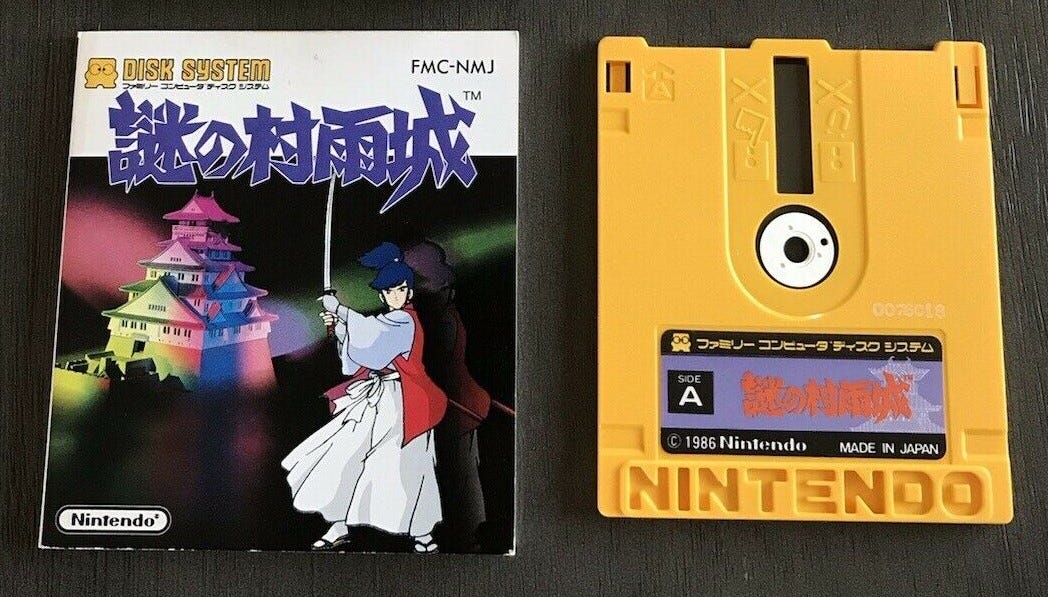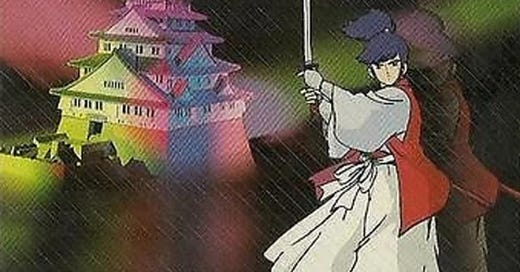In the, now 40+ year, history of the original Nintendo Entertainment System and the modern video game, there are bound to be quite a few hidden gems ready to be discovered or reappraised by modern gamers. Many of these are games that, for one reason or another, never made it over to America from Japan. But unlike most of those games, ‘The Mysterious Murasame Castle’ wasn’t even readily available on an official Japanese cartridge, ready to be played on consoles with Japanese game cart adaptors or region unlocked clone consoles.
Up until 2014, ‘The Mysterious Murasame Castle’ (‘Nazo no Murasame Jou’ in Japan) had only been officially avaliable on the Famicom Disc System; released only in Japan back in 1986.
While similar games such as ‘The Legend Of Zelda’ and ‘Metroid’ were originally released for the FDS as well. Those titles came over to America on traditional carts with internal batteries and specific chips to allow for saving game progress, in lieu of using discs.

Back in 2014, the game was finally officially localized and released for the 3DS Virtual Console. With its first US console release coming just last year in 2023 for the Switch Online service.
‘The Mysterious Murasame Castle’ is an action-adventure game set in Medieval Japan, where a mysterious golden object has crashed into the titular Murasame Castle and has given life to the giant Murasame statue inside. The energy from this mysterious golden power source has also infected the four neighboring castles.
You play as Takamaru, a samurai apprentice, equipped with unlimited shuriken and a short range katana. Your goal is to travel to each of the five castles and rid them of evil demons and ninja.
The game has often been compared to the original ‘Legend Of Zelda,’ having both been developed by Nintendo R&D4, both containing sword-wielding protagonists who travel a vast countryside seeking dungeons (or castles) that they must fight through to rid the land of some grand evil spirit, and both having music by the legendary Koji Kondo.
But while ‘Zelda’ is a more meticulous, action puzzle-solving affair; ‘Murasame’ is the opposite side of that coin in how it is more about arcade style action and testing your quick reflexes and dexterity.
Where ‘Zelda’ contains a truly open world, ‘Murasame’ contains five stages. Each stage broken up into two large playfields. The first part is always a large outside section with branching paths that you must traverse to find that stage’s castle. While the second part is always the castle itself, complete with its own unique set of dangers and branching paths.
‘Zelda’ has you leveling up by gradually collecting an entire inventory full of items and weapons to be used along your journey. ‘Murasame’ uses a more traditional level up weapon system where a new weapon pickup replaces your current projectile.
The game is a genuinely great time. Tons of quick-spawning enemies will keep you on your toes, with one wrong move the difference between finishing off a room full of samurai or catching a fireball and having to replay the last stage from the start.
The difficulty curve may be high, but the fact that you can save before every new castle makes it so you’re never sent all that far back if you die. With most deaths feeling like they were on you and not the game or controls. Further incentivising you to give it just one more try.
While ‘Murasame’ and its legacy are almost non-existent here in America, outside a ‘Smash Bros’ reference or two; back in Japan, the game was popular enough to get a live action adaptation that aired only once, back in 1986 and wasn’t seen again until a Japanese DVD release in the mid 2000s.
‘The Mysterious Murasame Castle’ is the definition of a hidden gem. Region locked for years, with its first console release for the US market coming only a year ago.
While its natural comparison in ‘Zelda’ is an undoubtably more robust gameplay experience. Pointing out what ‘Murasame’ isn’t shouldn’t negate what ‘Murasame’ is. What we have here is a game, similar in tone and approach to other R&D4 developed games; but with a distinct focus on quick, reflexive action that, frankly, would have probably been a success had it been localized in 1986.
Lucky for us here in 2024 that the game is no longer a mystery and is able to be played right now if you subscribe to Swtch Online or by other preservation-focused means, should you choose to go down that path.
Be sure to help out and share this article on social media. I’d really appreciate it. You can follow me on social media by reaching out below:
Follow on Twitter: MightyVin
Follow on Instagram: VinForteNYC







